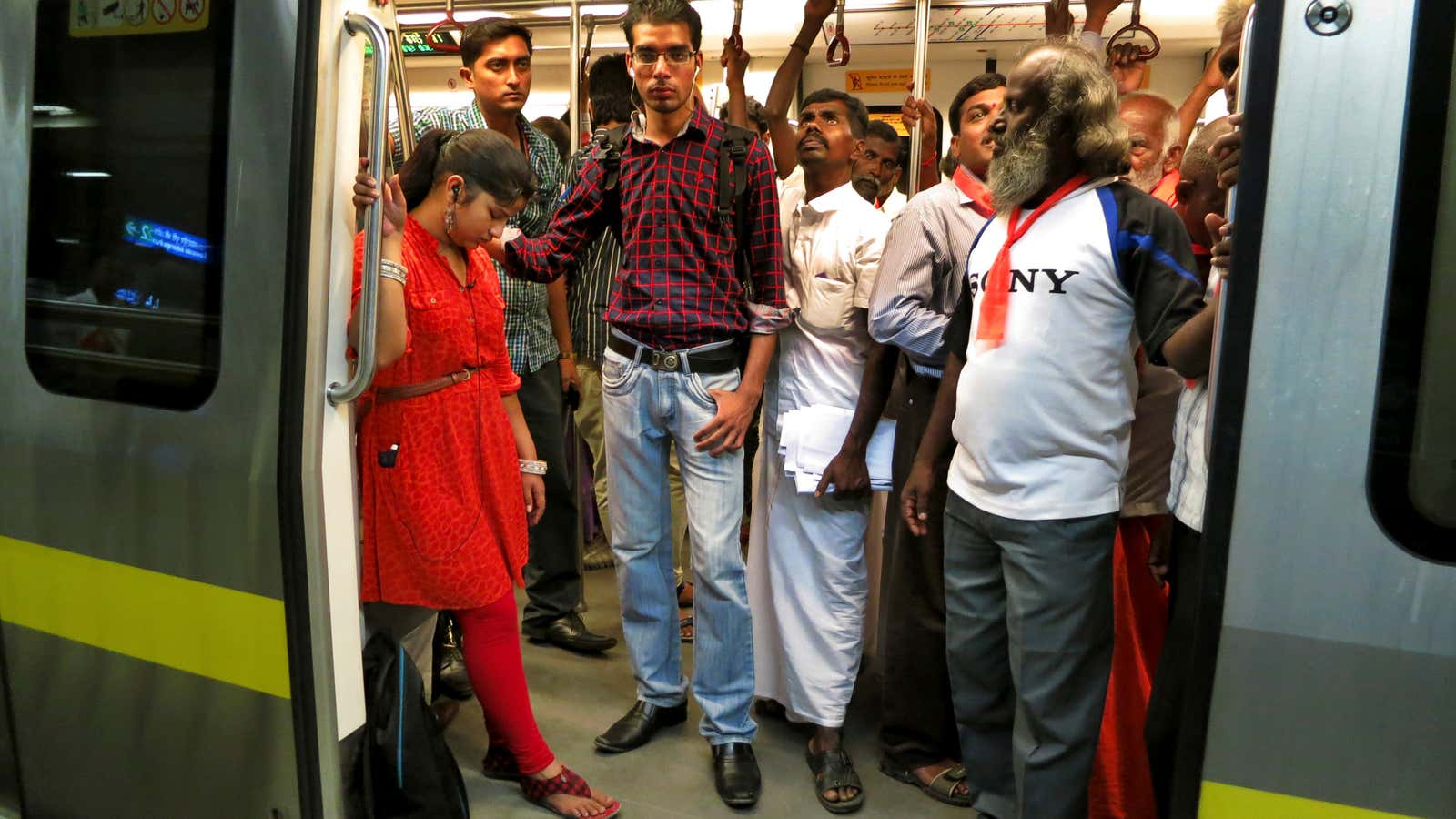The Delhi government wants to make riding on metro trains and public buses free for all women, a plan that experts doubt will help much.
On June 3, chief minister Arvind Kejriwal announced the move, adding that the government plans to implement it in around three months. The programme would cost the state Rs700 crore ($101 million) this year, he said.
The opposition Bharatiya Janata Party, which defeated Kejriwal’s Aam Aadmi Party in all seven parliamentary constituencies of Delhi in the national election last month, has called the new plan a populist gimmick ahead of the state legislative polls next year.
Money matters
The need to get more women to use public transport is crucial. Only 33% of the riders on Delhi Metro are female, Kejriwal said.
Experts, though, remain ambivalent over his plan’s ability to get a substantial number of women to use the Metro or buses that criss-cross the national capital every day.
Free rides would help women from the lower middle class who can’t afford existing fares, said Sewa Ram, professor of transport planning at the School of Planning and Architecture. “Last time when the Metro raised its fares, we observed that suddenly there was a reduction in demand,” he added.
Daily ridership fell by over 300,000 after the Delhi Metro Rail Corporation raised its fares in 2017. Currently, travelling 4 kilometres on a government-run bus in the city costs Rs10, while the same distance on the Metro costs Rs20.
Yet, marginalised women find the transit system daunting as “such infrastructure and technology have never been a part of their lifestyle,” said YSK Prerana, an India smart cities fellow with the union ministry of urban housing and development.
Paying for safety
The move would also do little to reduce traffic congestion.
“Women who use private transport won’t switch over because saving a few rupees has no significance for them,” Ram said, adding that they are more concerned about safety, timely access, and last-mile connectivity, which are provided by private vehicles.
Concerns around safety are not limited to just the Metro or bus rides, but also at the station as well as on the route to reach there. “Women waiting at bus stops face all kinds of safety issues. When a woman inside a bus faces harassment, there is no robust redress mechanism,” said Amit Bhatt, director of integrated transport at the non-profit World Resources Institute (WRI) India.
For instance, in the Indian city of Bhopal, about 88% of women users say they have faced harassment on public transport, according to a 2015 study by WRI India. In a survey held in 2012 by UN Women, 95% of the female respondents said they felt unsafe in Delhi’s public spaces, while 51% of the men admitted to harassing women in public spaces.
Though the new plan does not directly address questions on safety, Prerana said, one good that could come out of it is that as more women start riding the metro and buses due to the free service, other women may also feel encouraged to follow suit.
While announcing the plan, Kejriwal also said that his government is installing 70,000 CCTV cameras across Delhi this week, and 150,000 more cameras will be installed soon to improve public safety.
